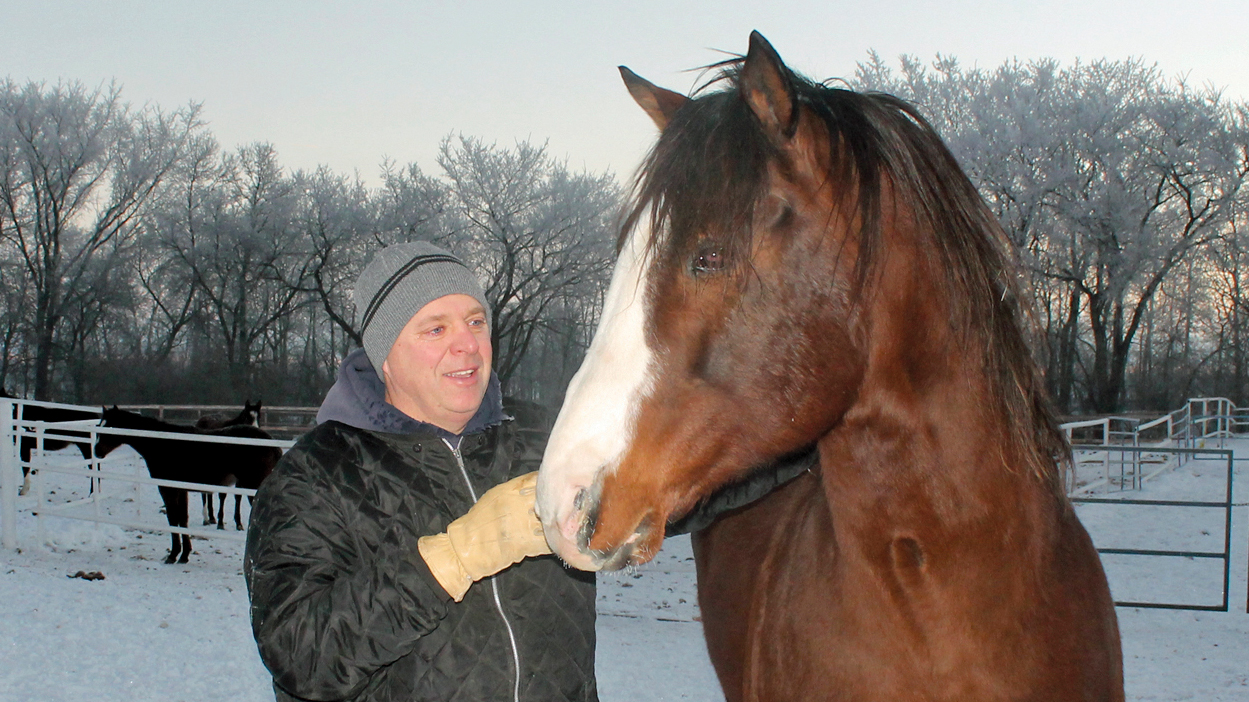Cam Ziprick’s impact on the sport of kings extends well beyond Manitoba’s borders.
To say that Ziprick, who owned his first thoroughbred when he was just 13, is the poster boy for horse racing in Manitoba wouldn’t be an overstatement.
For the past 15 years, he’s been the top thoroughbred breeder in his home province where he stands two stallions (Kentucky Bear and Going Commando) on his 1,500-acre farm.
Ziprick, who breeds, sells, and races a majority of the horses at the farm, has an association with 1997 Kentucky Derby champion Silver Charm.
“I was fairly young and didn’t have a lot of money, but I was looking for one that we might be able to get at a decent price and turn around and sell for a decent profit. We put him in the March sale and hoped to get $100,000. We didn’t. We flew back home to Winnipeg and sent Silver Charm to layover at J.B. and Kevin McKathon’s farm in Florida. A few days later, I got a call saying (owners) Bob and Beverley Lewis wanted to buy the horse. We didn’t get the $100,000, but it was fairly close at $85,000.”
In 24 career races, Silver Charm won 12 times, including the 1998 Dubai World Cup, while recording nearly $7 million in earnings.
Why does Ziprick remain an influential horseman?
On Jan. 12, 2019, Escape Clause, a Manitoba-bred daughter of Going Commando, took the Grade 3 La Canada Stakes at Santa Anita Park. The 6-year-old, bred by Ziprick and Arnason Farms, has 20 wins and 29 top-three finishes from 35 starts.
Yet another reminder of how Manitoba’s high profile horseman still has the golden touch.
What are the most critical challenges facing the industry in Canada today?
“Horse population is the biggest. Trying to attract new owners is another one. In my eyes, it starts with the breeder. Without the breeder, there are no horses. Every province is so different. The smaller the track – it’s not so much the smaller the problem – it’s different problems.”
What needs to change about the industry in the next 5-10 years?
“It starts from the breeder, to the owner, to the trainer, to the racetracks themselves – everybody needs to be more responsible. There isn’t as much room for mistakes as there used to be. From my perspective as a breeder, you need to be more responsible to put a product out there that people want, a product that is worth buying. It costs just as much to keep a really good mare as it does to keep a cheap one – you might as well start with a good product.
“The Manitoba government did a study and found out horse racing was an industry worth saving. To build the industry, they have to help us a little more to get the industry booming again instead of just maintaining it.”
How can you help affect that change?
“I’ve found that if you can own a share of a horse and slowly get involved, the hit isn’t as hard. I’ve brought new people into the game over the years, and if it doesn’t work out, they’re gone. I’ve owned horses by myself, but I always try to bring partners in. If it doesn’t work out, the hit isn’t as hard on the pocketbook. If you have three or four owners with you, then it’s not as bad. You can buy four horses with four people and do way better than buying one horse by yourself.”
Where do you see the thoroughbred industry in Canada in 10 years?
“I think it’s going to be where it is today. Looking down the road 10 years from now, it doesn’t take long for that to fly by. You better start today because breeding is a long process. That’s why many people don’t do it. It’s easier to buy a halter and claim a horse than it is to buy that horse and take it to the breeding shed. It might not get pregnant the first year or lose its foal. One mare might not have its first foal at the track for four or five years. In my mind, the breeder is most important because they have the most skin in the game.”


